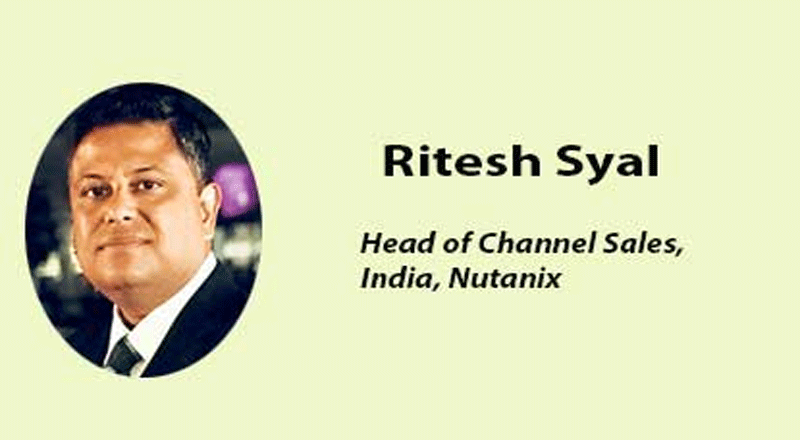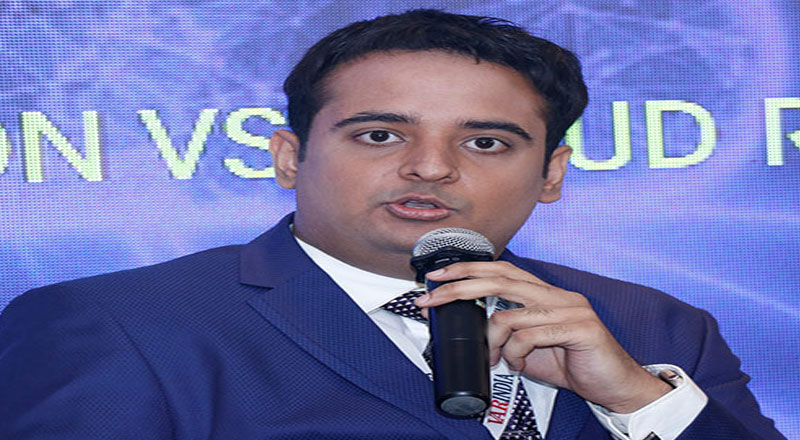With a vision to manage IT infrastructure in simple ways, Nutanix brings together compute, storage, networking, and virtualization in one invisible stack. Nutanix’s industry-leading Enterprise Cloud platform is enabling thousands of companies to run their apps and workloads with unparalleled performance. Companies around the world use Nutanix software to leverage a single platform to manage any app at any location at any scale for their private, hybrid and multi-cloud environments. In a chat with VARINDIA, RITESH SYAL, HEAD & DIRECTOR, CHANNELS & ALLIANCES, INDIA, NUTANIX reckoning the halcyon days before pandemic and the ever-changing IT requirements discusses about their targeted verticals, Challenges and opportunities, channel strategies and GTMs etc.
Changing IT requirements
Commenting about the ever-changing IT requirements Ritesh says, “The pandemic has caused IT to be seen more strategically within the enterprise, according to 76 per cent of respondents in India who participated in our third annual Enterprise Cloud Index (ECI) study. Our research also found that 63 per cent of India’s enterprises have increased their investments in hybrid cloud because it is now seen as their preferred IT operating model.
The Nutanix Elevate Service Provider Program (NESPP) helps partners. Service provider partners can now create highly unique hybrid and multicloud services for their customers. This will boost profitability and reduce time-to-market and simplify engagement for our entire partner ecosystem.”
Targeted verticals as the growth engine
Ritesh feels that organizations across verticals are leaning toward hybrid and multicloud to operative more effectively in an increasingly digital environment. The demands of customers and employees within sectors such as BFSI, government, IT/ITeS and healthcare are driving rapid cloud adoption. Pressures in IT/ITeS such as mandated remote work, increased cyber threats and ransomware attacks, and risks of disruption, as well as dynamic client demands, have pushed many IT firms to embrace a ‘cloud-first’ approach going forward.
“Our most recent ECI study revealed that the majority (86 per cent) of financial services respondents identified hybrid cloud (including private and public) as the ideal IT operating model for their organizations. Alongside this, control, security, and regulatory compliance will become top priorities. In healthcare, the continued adoption of virtual physician visits and the expansion of telehealth options will become more prevalent as patient care evolves to fit the digital landscape. Knowing this, healthcare IT leaders will look at hybrid and multicloud environments to ensure their organizations have flexible architectures to best support the rise of virtual patient care options. Even public sector respondents to our recent ECI report said they are doubling their hybrid cloud usage within one year and growing their deployments to about 56 per cent penetration within five years,” says Ritesh.
Challenges and opportunities for Service Providers
Ritesh comments, “With the opportunity, comes the challenge of service providers meeting increasingly individualized customer demands while staying profitable. Service providers are in a unique position to assist a business’ growth, optimisation initiatives and digital transformation needs.”
Ritesh foresees that cloud service providers are facing far greater challenges than ever before, from increased competition to commoditization of services to eroding margins. With multiple options available to them and the rise of digital organizations, businesses are more demanding with higher expectations around performance, service levels, and simplicity of operations.
“Another challenge for service providers is the contract itself- traditional programs have vendor lock-ins, mandatory product purchases, and minimum commitment requirements. These take away flexibility and eat into profitability for service providers,” he further says.
Channel Strategy for India
Describing how Nutanix’s channel ecosystem is best placed to cater to succeed in the new normal, Ritesh comments, “Our business is 100 per cent channel-driven in the country, and we ensure that our partners have the resources, technology and tools required to succeed. We recently launched a Partner Support Center in India that will enable our partners to quickly move to an EaaS model. Our goal is to simplify engagement for our channel ecosystem as much as possible, so our partners can focus on helping customers move to multi cloud environments.”
GTM to attract the VARs
Further discussing about their partner programs, Ritesh depicts, “Our program makes engagement easier for our partner ecosystem by utilising a standardised set of tools, resources, and marketing platforms, removing complexity and enhancing incentive possibilities. With a clear understanding of the challenges that service providers face today, NESPP specifically helps our service provider partners improve margins and agility by addressing the lock-in and minimum commitment requirements encountered in traditional contracts and programs.”
He also adds, “Partners who join the program will be able to take advantage of benefits including training, Not For Resale (NFR) and Nutanix XLAB software licenses, and enablement support. Professional Service Provider partners will have expanded support such as marketing materials, potential market development funds, sales tools, goalbased financial incentives and rebates, and personalized insights in Nutanix’s Partner Portal.”





